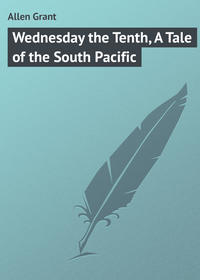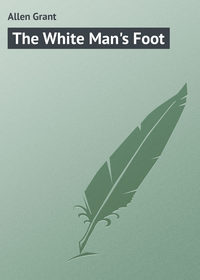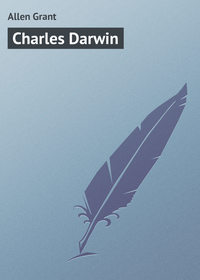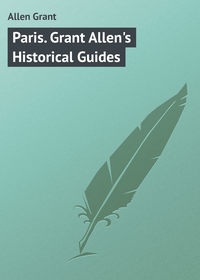 полная версия
полная версияCities of Belgium. Grant Allen's Historical Guides
The Tonlieu is now fitted up as the Municipal Library. (Open daily, free, 10 to 1, and 3 to 5, Saturday and Sunday excepted.) It contains illuminated manuscripts and examples of editions printed by Colard Mansion. All round the Place are other picturesque mediæval or Renaissance houses.
The little street to the R. (diagonally) of the Tonlieu leads on to the Marché du Mercedi, now called Place de Memling, embellished by a statue of the great painter. Cross the Place diagonally to the Quai des Espagnoles (Madonna and Child in front of you) and continue along the quay, to the L., to the first bridge; there cross and go along the picturesque Quai des Augustins to the Rue Flamande. (Quaint little window to the left, as you cross the bridge.) Follow the Rue Flamande as far as the Theatre, just before reaching which you pass, right, a handsome mediæval stone mansion, (formerly the Guild of the Genoese Merchants,) with a relief over the door, representing St. George killing the Dragon, and the Princess Cleodolind looking on. At the Theatre, turn to the R., following the tram-line, and making your way back to the Grand’ Place by the Rue des Tonneliers.
(2) As early as 1362, Bruges acquired its existing size, and was surrounded by ramparts, which still in part remain. A continuous canal runs round these ramparts, and beyond it again lies an outer moat. Most of the old gates have unhappily been destroyed, but four still exist. These may be made the objects of interesting rambles.
Go from your hotel, or from the Grand’ Place, by the Rue Flamande, as far as the Rue de l’Académie. Turn along this to the R., into the Place Jan van Eyck, noting as you pass the Bear of Bruges at the corner of the building of the old Academy. Follow the quay straight on till you reach a second canal, near the corner of which, by the Rue des Carmes, is an interesting shop with good beaten brasswork. Take the long squalid Rue des Carmes to the right, past the ugly convent of the English Ladies, with its domed church in the most painful taste of the later Renaissance (1736). The mediæval brick building on your right, at the end of the street, is the late Gothic Guild-house of the Archers of St. Sebastian. Its slender octagonal tower has a certain picturesqueness. (St. Sebastian was of course the patron of archery.) Charles II. of England (see under the Grand’ Place) was a member of this society during his exile: his bust is preserved here. So also was the Emperor Maximilian. Continue to the ramparts, and mount the first hill, crowned by a windmill, – a scene of a type familiar to us in many later Dutch and Flemish pictures. A picturesque view of Bruges is obtained from this point: the octagonal Belfry, the square tower of St. Sauveur, (the Cathedral), the tapering brick spire of Notre-Dame, with its projecting gallery and the steeple of the new church of the Madeleine are all conspicuous in views from this side. Follow the ramparts to the R., to the picturesque Porte de Ste. Croix, and on past the barracks and the little garden to the Quai des Dominicains, returning by the Park and the Place du Bourg or the Dyver.
(3) Set out by the Grand’ Place and the Place du Bourg; then follow the Rue Haute, with its interesting old houses, as far as the canal. Do not cross it, but skirt the quay on the further side, with the towers of St. Walburge and St. Gilles in front of you. At the bridge, diverge to the right, round the church of St. Anne, and the quaint little Church of Jerusalem, which contains an unimportant imitation of the Holy Sepulchre at Jerusalem, founded by a burgomaster of Bruges in the 15th century. It is just worth looking at. Return to the bridge, and follow the quay straight on to the modern Episcopal Seminary and the picturesque old Hospice de la Potterie, which now harbours the Museum of Antiquities belonging to the Hospital of St. John. I do not advise a visit. (It contains third-rate early Flemish pictures, inferior tapestry, and a few pieces of carved oak furniture. Admission, 50 c.: entrance by the door just beyond the church, No. F, 79. The church itself is worth a minute’s visit.) This walk passes many interesting old houses, which it is not necessary now to specify. Return by the Porte de Damme, and the opposite side of the same canal, to the Pont des Carmes, whence follow the pretty canal on the right to the Rue Flamande.
(4) Take the Rue St. Jacques, and go straight out to the Porte d’ Ostende, which forms an interesting picture. Cross the canal and outer moat, and traverse the long avenue, past the gasometers, as far as the navigable canal from Bruges to Ostend. Then retrace your steps to the gateway, and return by the ramparts and the Railway Station to the Rue Nord du Sablon.
These four walks will show you almost all that is externally interesting in the streets and canals of the city.
The original Palace of the Counts of Flanders, we saw, occupied the site of the Palais de Justice. Their later residence, the Cour des Princes, in a street behind the Hôtel du Commerce, has now entirely disappeared. Its site is filled by a large ornate modern building, belonging to the Sisters of the Sacred Heart, who use it as a school for girls.
The water-system of Bruges is also interesting. The original river Reye enters the town at the Minnewater, flows past the Hospital and the Dyver, and turns northward at the Bourg, running under arches till it emerges on the Place Jan van Eyck. This accounts for the apparently meaningless way this branch seems to stop short close to the statue of Van Eyck: also, for the mediæval ships unloading at the Grand’ Place. The water is now mostly diverted along the canals and the moat by the ramparts.
E. THE CHURCHES
[The original Cathedral of Bruges (St. Donatian) was destroyed, as we saw, by the French, in 1799; but the town still possesses two fine mediæval churches of considerable pretensions, as well as several others of lesser importance. Though of very ancient foundation, the two principal churches in their existing form date only from the most flourishing period of Bruges, the 13th, 14th, and 15th centuries.
St. Salvator or St. Sauveur, the larger, was erected into the Cathedral after the destruction of St. Donatian, whose relics were transferred to it. To this, therefore, we will first direct ourselves.]
Go down the Rue des Pierres as far as
the cathedral,which replaces a very ancient church built by St. Eligius (St. Éloy) in 646.
Externally, the edifice, which is built of brick, has rather a heavy and cumbrous effect, its chief good features being the handsome square tower and the large decorated windows of the N. and S. Transepts. The Choir and its chapels have the characteristic French form of a chevêt. The main portal of the N. Transept has been robbed of its sculpture. The Choir is of the late 13th century: the Nave and Transept are mainly in the decorated style of the 14th.
The best entrance is near the tower on the N. side. Walk straight on into the body of the Nave, by the archway in the heavy tower, so as to view the internal architecture as a whole. The Nave and single Aisles are handsome and imposing, though the windows on the S. side have been despoiled of their tracery. Notice the curious high-pointed Triforium (1362), between the arches of the Nave and the windows of the Clerestory. The Choir is closed by a strikingly ugly debased Renaissance or rococo Rood-Screen, (1682), in black-and-white marble, supporting the organ. It has a statue of God the Father by the younger Quellin. The whole of the interior has been decorated afresh in somewhat gaudy polychrome by Jean Béthune. The effect is on the whole not unpleasing.
The Cathedral contains few works of art of high merit, but a preliminary walk round the Aisles, Transept, and Ambulatory behind the Choir will give a good idea of its general arrangement. Then return to view the paintings. The sacristan takes you round and unlocks the pictures. Do not let him hurry you.
Begin with the Left Aisle.
The Baptistery, on your L., contains a handsome font. R. and L. of the entry to it are admirable brasses. In the Baptistery itself, L. wall, are two wings of a rather quaint triptych, representing St. Martin dividing his cloak with the beggar; St. Nicholas raising to life the three boys who had been salted for meat; St. Mary Magdalen with the pot of ointment (in the distance, as Penitent in the Desert); and St. Barbara with her tower; dated 1613. Also a rude Flemish picture (16th century) of the lives of St. Joachim and St. Anna, and their daughter the Blessed Virgin: – the main episodes are the Marriage of the Virgin, Birth of the Virgin, and Rejection of St. Joachim from the Temple, with other scenes in the background.
The end wall of the Baptistery has Peter Pourbus’s masterpiece, a *triptych painted for the Guild of the Holy Sacrament, attached to the church of St. Sauveur, and allusive to their functions. The outer wings, when closed, represent the Miracle of the Mass of St. Gregory, when the Host, as he consecrated it, was changed into the bodily Presence of the Saviour, to silence a doubter. It thus shows in a visible form the tremendous mystery of Transubstantiation, in honour of which the Guild was founded. Behind, the Brothers of the Confraternity are represented (on the right wing) in attendance on the Pope, as spectators of the miracle. One of them holds his triple crown. These may rank among the finest portraits by the elder Pourbus. They show the last stage in the evolution of native Flemish art before it was revolutionized by Rubens. The inner picture represents, in the centre, the Last Supper, or rather, the Institution of the Eucharist, to commemorate which fact the Guild was founded. The arrangement of the figures is in the old conventional order, round three sides of a table, with Judas in the foreground to the left. The wings contain Old Testament subjects of typical import, as foreshadowing the Eucharist. Left, Melchisedec giving bread and wine to Abraham; right, Elijah fed by the angel in the Wilderness. All the faces have still much of the old Flemish portrait character.
On the R. wall are the wings of a picture, by F. Pourbus (the son), painted for the Guild of Shoemakers, whose chapel is adjacent. The inside contains portraits of the members. On the outside are their patrons, St. Crispinus and St. Crispianus, with their shoemakers’ knives. Also, an early Crucifixion, of the school of Cologne (about 1400), with St. Catherine holding her wheel and trampling on the tyrant Maximin, by whose orders she was executed, and St. Barbara with her tower. (These two also occur together in Memling’s great triptych.) The picture is interesting as the only specimen in Bruges of the precursors of Van Eyck on the lower Rhine. The Baptistery contains, besides, a fine old candlestick, and a quaint ciborium (for the Holy Oil) with coloured reliefs of the Seven Joys of Mary (1536).
The vistas from the North Transept are impressive. It terminates in the Chapel of the Shoemakers’ Guild, with a fine carved wooden door of about 1470, and good brasses, as well as an early crucifix. It is dedicated to the patron saints of the craft, and bears their arms, a boot.
The first two chapels in the Ambulatory (behind the Choir) have good screens.
The third Chapel encloses the tomb of Archbishop Carondelet, in alabaster, (1544,) a fine work of the Italian Renaissance. The Descent from the Cross by Claeissens, with the Crown of Thorns and the Holy Blood in the foreground: on the wings, St. Philip, and the donor, under the protection of (the canonized) Charlemagne. Near this is a *triptych by Dierick Bouts, (falsely ascribed to Memling) representing, in the centre, St. Hippolytus torn to pieces by four horses. (He was the jailor of St. Lawrence, who converted him: see Mrs. Jameson). The faces show well the remarkable power of this bourgeois painter of Louvain. On the left wing are the donors; on the right wing Hippolytus confesses himself a Christian, and is condemned to martyrdom. Over the altar, retable, a Tree of Jesse, in carved woodwork, with the family of Our Lady: on the wings, (painted,) the legend of St. Hubert and the stag, and the legend of St. Lucy.
In the Apse is the Chapel of the Host.
The next chapel, of the Seven Sorrows, has a Mater Dolorosa of 1460 (copy of one at Rome); a fine *brass; and the *portrait of Philippe le Beau, known as Philippus Stok (father of Charles V), and bearing the collar of the Golden Fleece.
The Choir, (admirable architecturally,) contains the *stalls and arms of the Knights of the Golden Fleece, with good carved Misereres.
The Cathedral contains many other pictures of interest, which, however, do not fall within the scope of these Guides.
The Chambre des Marguilliers, or Churchwardens’ Vestry, contains manuscripts and church furniture, sufficiently described by the sacristan.
In the Sacristy are still preserved the relics of St. Donatian.
Give the sacristan a franc, and then go round alone again, to inspect the unlocked pictures at your leisure.
On leaving the Cathedral, go round the south side, which affords an excellent view of the chapels built out from the apse. Then take the little Rue du St. Esprit as far as the Church of
Notre-Dame,which replaces a chapel, built by St. Boniface, the Apostle of Germany, in 744, and enclosed in the town in 909.
Stand opposite it, in the small Place on the N. side, to observe the somewhat shapeless architecture, the handsome brick tower crowned by a tall brick steeple, and the beautiful little *porch or “Paradise,” built out from the main structure in flamboyant Gothic of the 15th century. The portal of this porch has been walled up, and the area is now used as a chapel, approached from the interior. Notice the delicate tracery of the windows, the fine finials and niches, and the charming gable-end.
The picturesque building with turrets to the L. of the church was originally the mansion of the family Van der Gruuthuus, one of the principal mediæval stocks of Bruges. It had a passage communicating with the family gallery in the church of Notre-Dame. The building, recently restored, is now in course of being fitted up for the Town Museum of Antiquities. A Museum of Lace is already installed in it; the entrance is by a doorway over the bridge to the left (50 c. per person).
Enter the church, and walk straight into the Nave, below the great West Window, a spot which affords a good view of the centre of the church, the vaulted double Aisles, and the angular Apse. The Choir is shut off from the body of the church by a very ugly marble Rood-Screen (1722), still bearing its crucifix, and with a figure of Our Lady, patroness of the church, enshrined above its central arch. Rococo statues of the Twelve Apostles, with their well-known symbols (1618), are attached to the pillars. (Note these symbols: they recur in similar situations everywhere.) In spite of hideous disfigurements, the main portion of the interior is still a fine specimen of good middle Gothic architecture, mainly of the 14th century.
Walk up the outer left Aisle. The last bay is formed by the Baptistery, originally the porch, whose beautiful exterior we have already viewed. Its interior architecture is also very charming. It contains the Font, and the usual figure of the patron, St. John the Baptist. This Aisle terminates in an apsidal chapel (of the Holy Cross) containing inferior pictures of the 17th century, representing the history of a relic of the True Cross preserved here.
The inner left Aisle leads to the Ambulatory or passage at the back of the Choir. The Confessionals to the R. have fairly good rococo carved woodwork, 1689. On the L. is the handsome mediæval woodwork gallery (1474), belonging to the Van der Gruuthuus family, originally approached by a passage from their mansion behind. Beneath it, is a screen of delicate early Gothic architecture, with family escutcheons above the door.
The windows of the Apse have good modern stained glass.
On the L., at the entrance to the Apse, Pourbus’s Adoration of the Shepherds, a winged picture, closed. The sacristan will open it. On the wings are, left, the donor, Sire Josse de Damhoudere, with his patron, St. Josse, and his four sons; right, his wife, Louise, with her five daughters, and her patron St. Louis of France, wearing his crown and robe of fleurs-de-lis, and holding the main de justice. He is represented older than is usual, or indeed historical, and in features somewhat resembles Henri IV. This is a fine picture for its master. On the outer wings are the cognate subjects, the Circumcision and the Adoration of the Magi, in grisaille.
The chapel in the Apse, formerly the Lady Chapel, now contains the Host. It has a gaudy modern altar for the monstrance.
In the South Ambulatory, over a doorway, Foundation of the Church of Santa Maria Maggiore at Rome, by Claeissens.
A chapel to the L., just beyond, locked, but opened by the sacristan (1 franc; or, for a party, according to notice displayed at entrance), contains the celebrated **tombs of Mary of Burgundy and Charles the Bold, her father. Mary was the wife of Maximilian, and died by a fall from her horse in 1482, when only twenty-five. Her **monument was designed and executed by Peter Beckere of Brussels, by order of her son Philippe le Beau, in 1502. The sarcophagus is of black marble: the statue of the Princess, in gilt bronze, lies recumbent upon it. The style is intermediate between that of the later Middle Ages and of the full Renaissance. Beside it is the *tomb of Charles the Bold, of far less artistic value. Charles was buried at Nancy, after the fatal battle, but his body was transported to St. Donatian in this town by his descendant Charles V, and finally laid here beside his daughter by Philip II, who had this tomb constructed for his ancestor in imitation of that of Mary.
(I advise the visitor after seeing these tombs and the great chimney-piece of the Franc de Bruges to read up the history of Charles the Bold and his descendants, down to Charles V.)
The east wall of this chapel, beyond the tomb of Charles the Bold, has a fine picture of Our Lady of Sorrows, enthroned, surrounded by smaller subjects of the Seven Sorrows. Beginning at the left, the Circumcision, the Flight into Egypt, Christ lost by his parents in the Temple, the Way to Calvary, (with St. Veronica holding out her napkin,) the Crucifixion, (with Our Lady, St. John, and Mary Magdalen,) the Descent from the Cross, and the Deposition in the Tomb. A fine work of its sort, attributed to Mostart (or to Maubeuge). On the west wall are two wings from a triptych by Pourbus, with tolerable portraits, (centre-piece destroyed,) and an early Flemish painting of the Deposition from the Cross (interesting for comparison with Roger van der Weyden and Gerard David). In the foreground lies the vessel containing the Holy Blood. On the wings are the Crucifixion and the Resurrection. The whole is very rudely painted. Outside are portraits of the donor and his wife and children, with their patrons St. James (staff and scallop) and St. Margaret (whose dragon just appears in the background).
On an arcade, a little further on, is a very early fresco (1350?) of a saint (St. Louis of France?), and also a dainty small relief (about 1500) of a donor, introduced by his patron, St. Peter, adoring Our Lady.
The end chapel of the right aisle, that of the Holy Sacrament, contains a celebrated and noble white marble **Madonna and Child, by Michael Angelo, enshrined in a black marble niche. The pensive, grave, and graceful face, the exquisite modelling of the dainty naked Child, and the beautiful infantile pose of its left hand, all betray a design of Michael Angelo, though the execution may possibly have been left to pupils. But the modelling is softer and more feminine than is usual with this great sculptor, except in his early period. In this respect, it resembles most the unfinished Madonna in the Bargello at Florence. Condivi mentions that Peter Mouscron of Bruges ordered of Michael Angelo a Madonna and Child in bronze: he was probably mistaken as to the material: and we have here doubtless the work in question. Apart from its great artistic value, this exquisite group is interesting as affording another link between Flanders and Italy.
The same chapel also contains some good 17th century pictures.
Near the confessional, as we return towards the West End of the church, we find a good diptych of Herri met de Bles, of 1520, containing, left panel, an Annunciation, with all the conventional elements; to the left, as usual, is the angel Gabriel; to the right, Our Lady. These relative positions are never altered. The lilies in the pot, the desk and book, the bed with its furniture, the arcade in the background, and the rich brocade, are all constant features in pictures of this subject. Look out for them elsewhere. The right panel has the Adoration of the Magi, with the Old, Middle-aged, and Young Kings, the last-named a Moor. This quaint and interesting work of a Flemish painter, with its archaic background, and its early Italian reminiscences, also betrays the influence of Dürer. Among the other pictures may be mentioned a triptych in an adjacent small chapel: the central panel shows the Transfiguration, with the three apostles below, Moses, Elias, and the Eternal Father above (perhaps by Jan Mostart). On the wings (much later, by P. Pourbus), are the portraits of the donor, his wife, and their patron saints.
The West Wall of the church has several large pictures of the later Renaissance, which can be sufficiently inspected on their merits by those who care for them. The best of them are the Adoration of the Magi by Seghers, and De Crayer’s Adoration of the Infant Jesus. I do not propose to deal at length with later Flemish art till we reach Brussels and Antwerp: at Bruges, it is best to confine oneself to the introductory period of Flemish painting – that of the Burgundian princes. I will therefore only call attention here to the meaningless way in which huge pictures like B. van Orley’s Crucifixion, with subsidiary scenes from the Passion, reproduce the form of earlier winged pictures, which becomes absurd on this gigantic scale.
The Church of St. Jacques stands in the street of the same name, conveniently near the Hôtel du Commerce. It is a good old mediæval building (12th century, rebuilt 1457-1518), but hopelessly ruined by alterations in the 17th century, and now, as a fabric, externally and internally uninteresting. Its architecture is in the churchwarden style: its decoration in the upholsterer’s. The carved wooden pulpit is a miracle of bad taste (17th century), surpassed only by the parti-coloured marble rood-screen. A few good pictures and decorative objects, however, occur among the mass of paintings ranged round its walls as in a gallery. The best is a panel of the old Flemish School (by Dierick Bouts, or more probably a pupil), in the left aisle, just beyond the second doorway. It tells very naïvely the History of St. Lucy (see Mrs. Jameson). Left, she informs her mother that she is about to distribute her goods to the poor, who are visibly represented in a compact body asking alms behind her. Centre, she is hailed before the consul Paschasius by her betrothed, whom she refuses to marry. She confesses herself a Christian, and is condemned to a life of shame. Right, she is dragged away to a house of ill-fame, the consul Paschasius accompanying; but two very stumpy oxen fail to move her. The Holy Ghost flits above her head. The details are good, but the figures very wooden. Dated, 1480.









